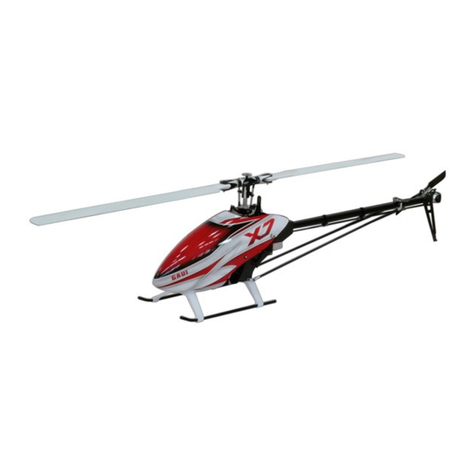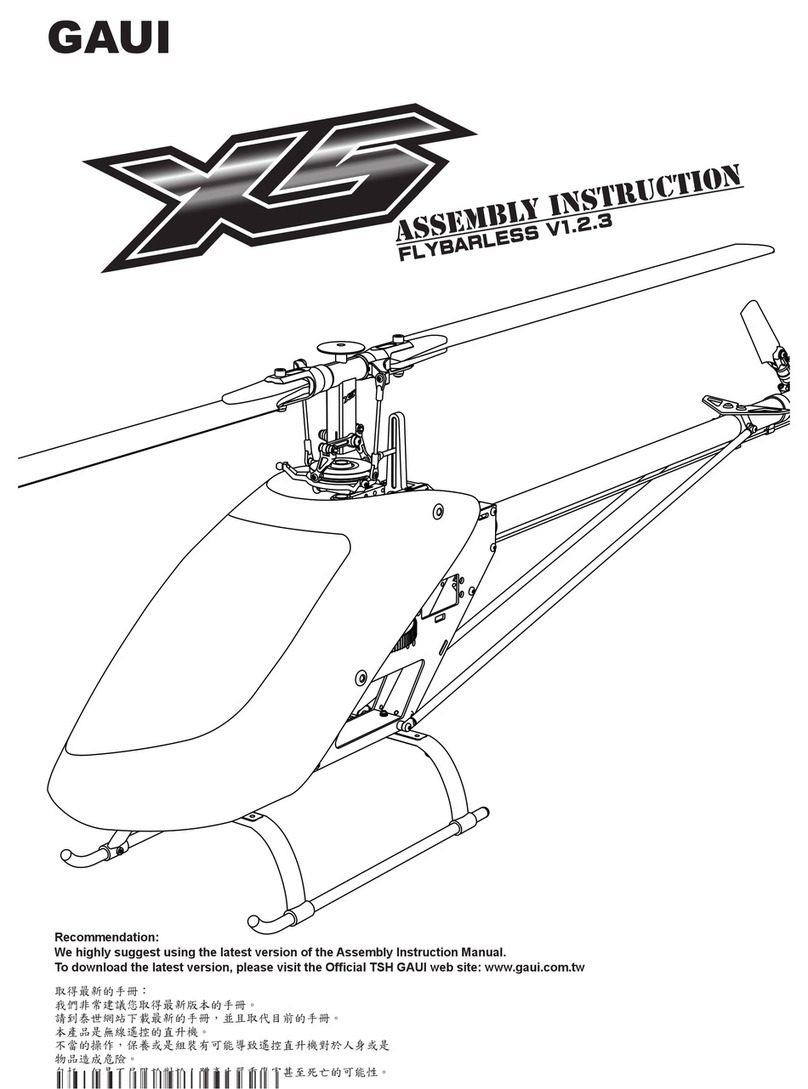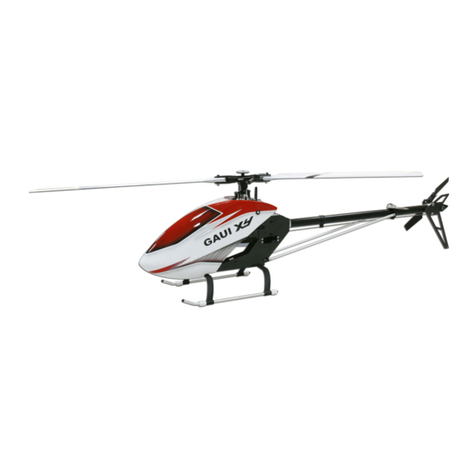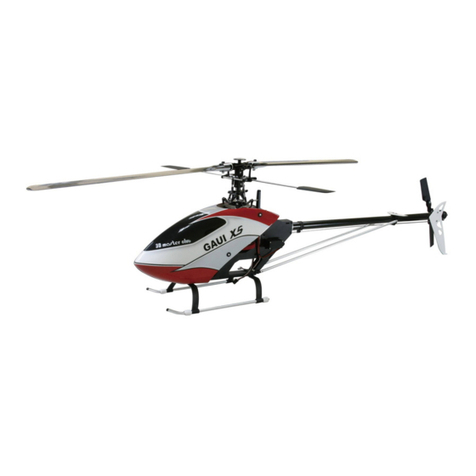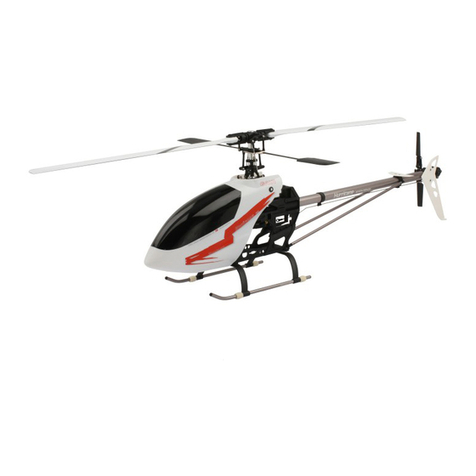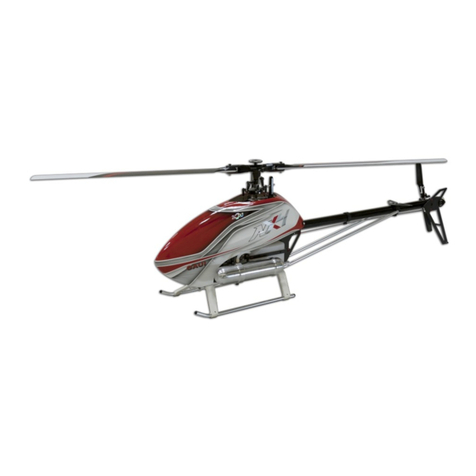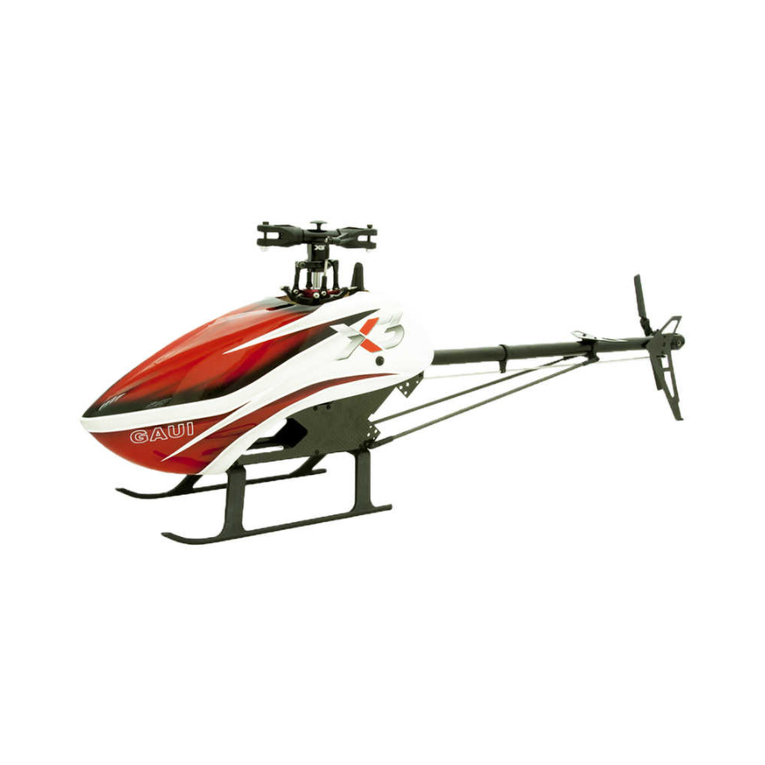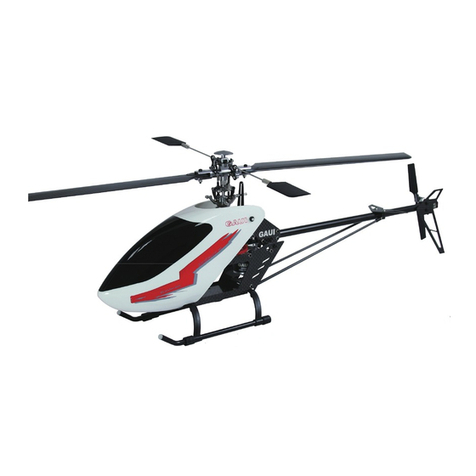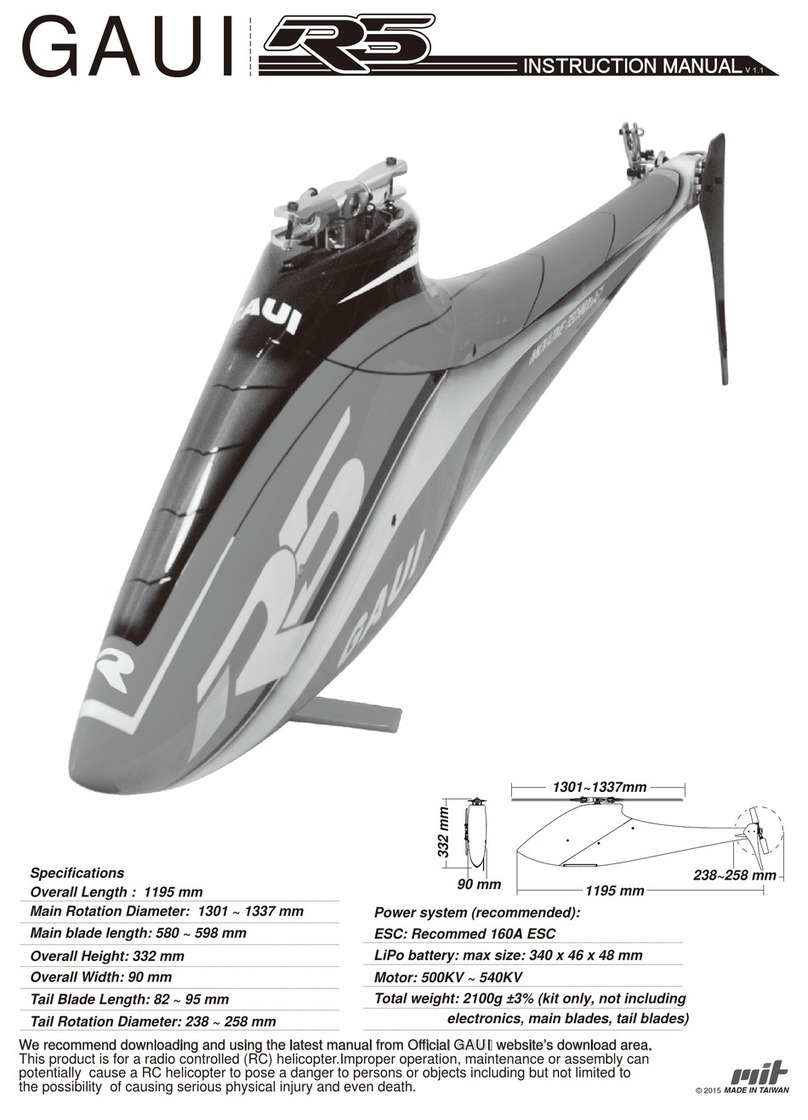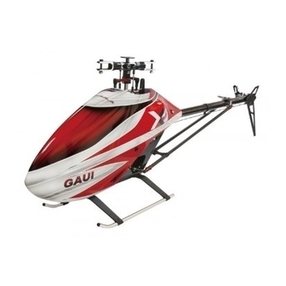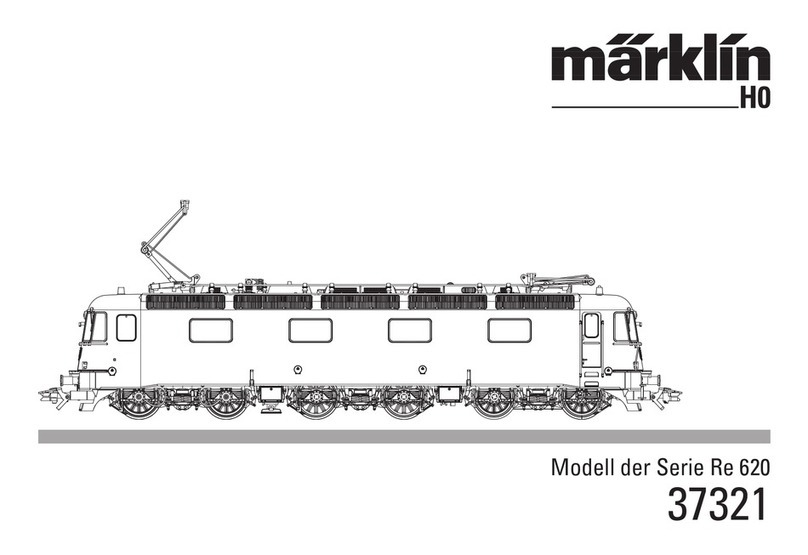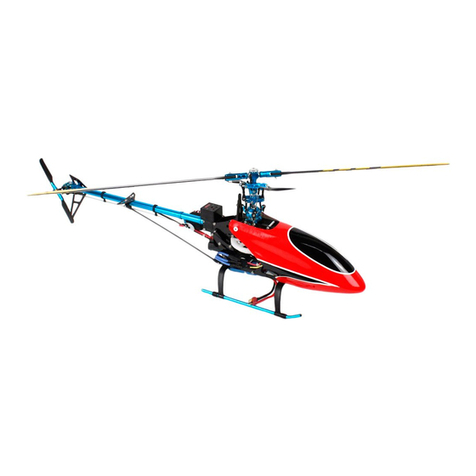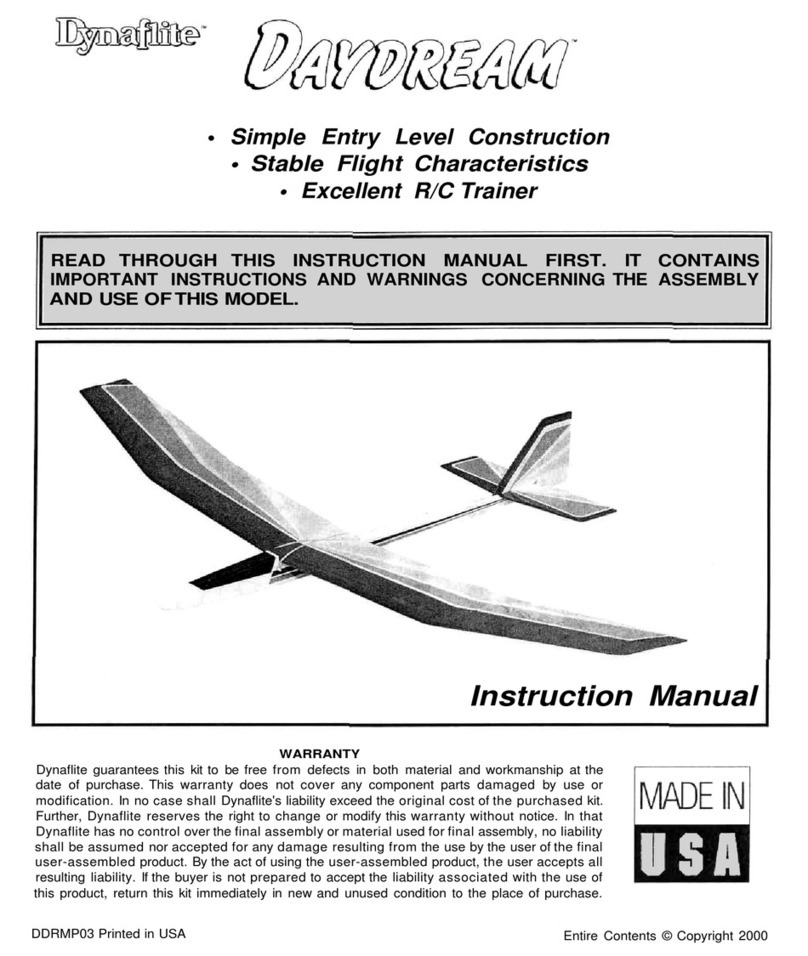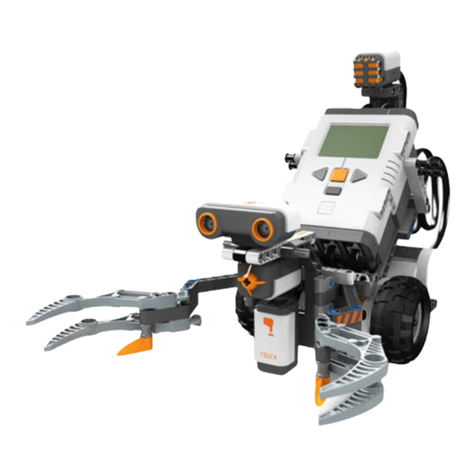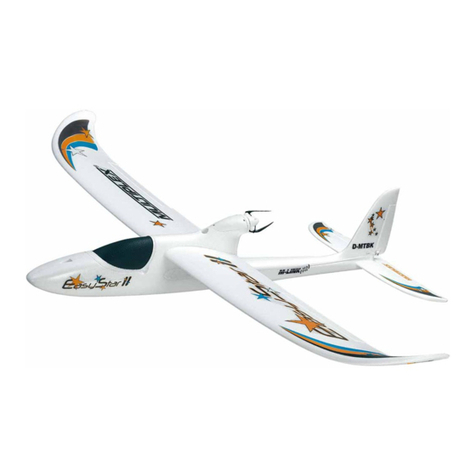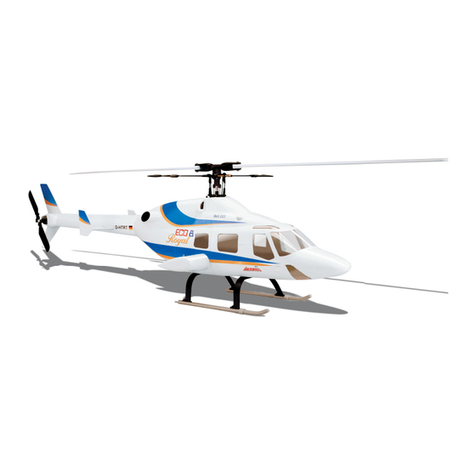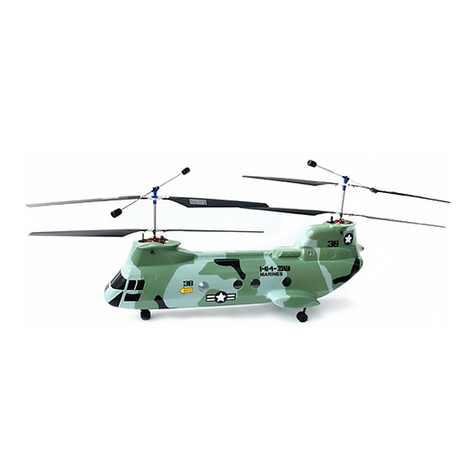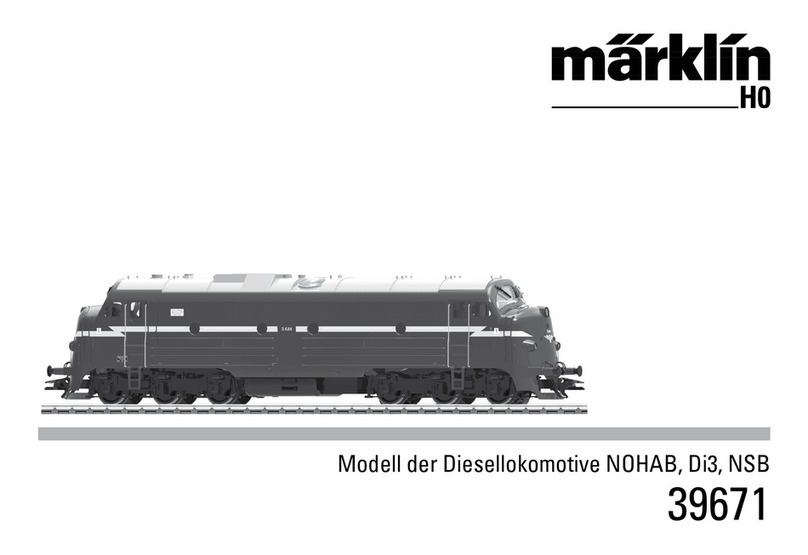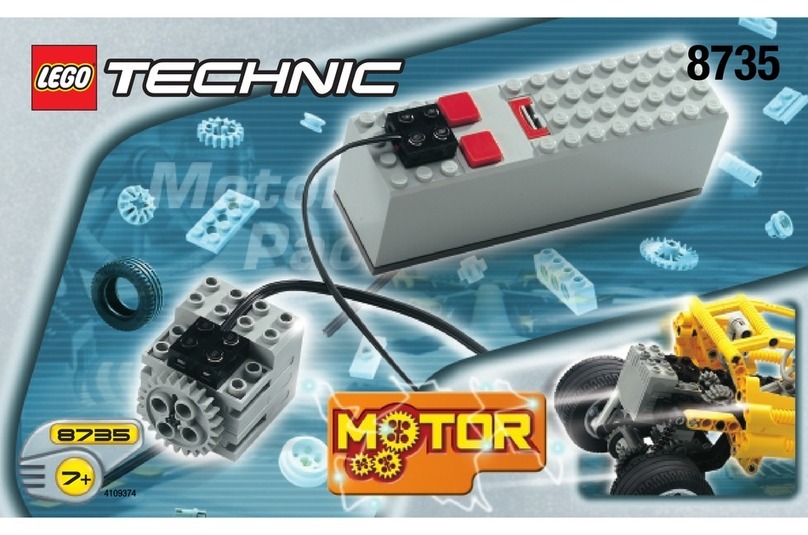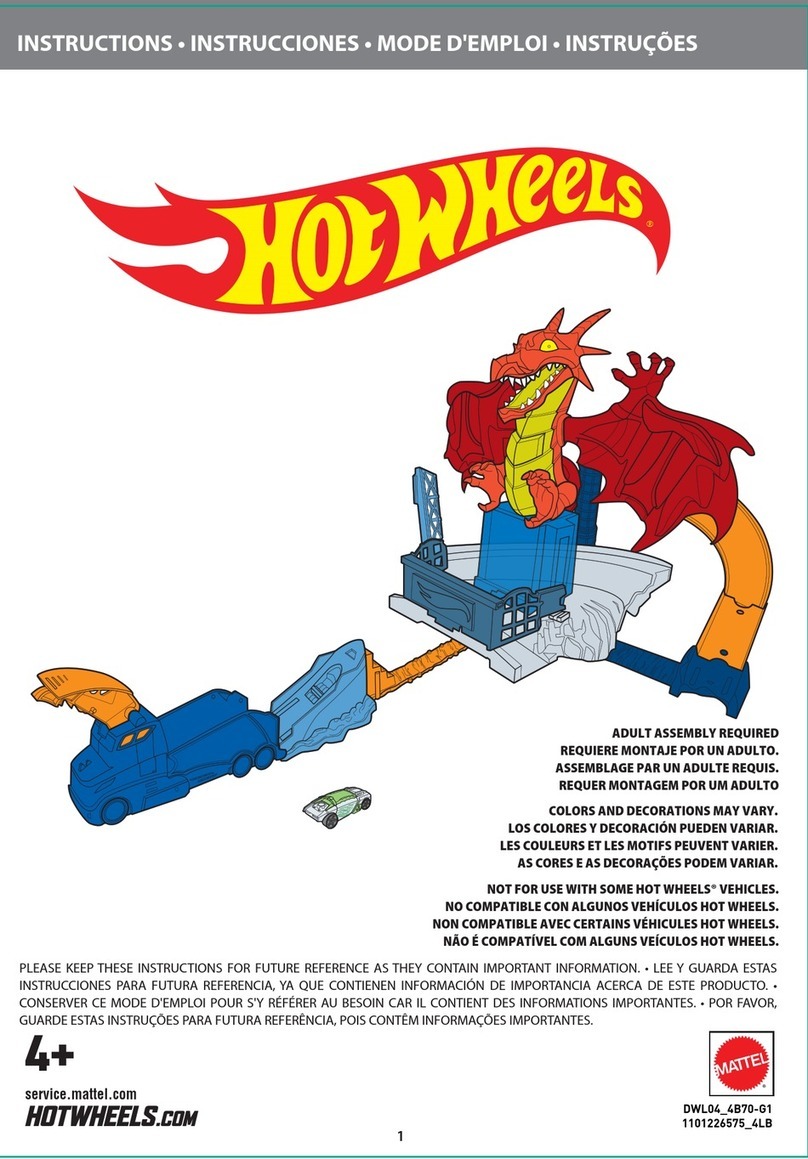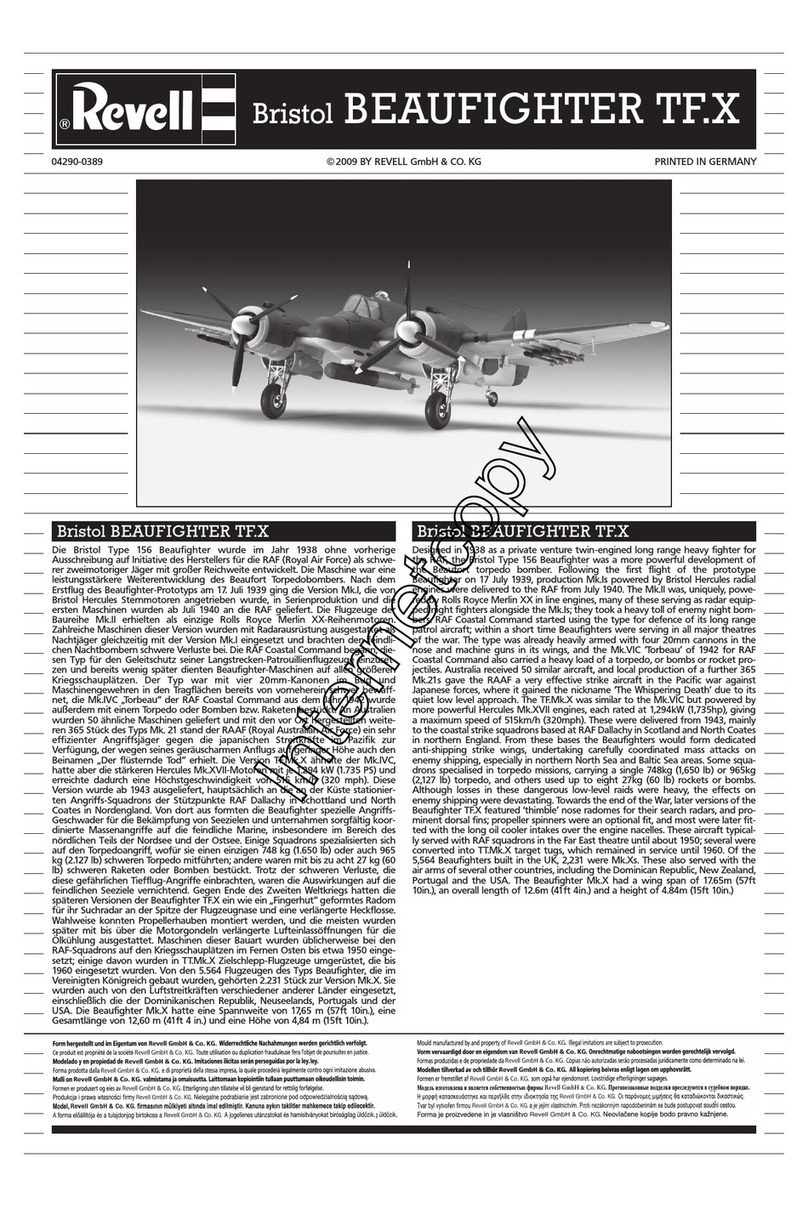Tail servo and the heading hold gyro setup
1. Install the Gyro and the tail servo.
2. Connect the tail pushrod to the servo.
Make sure the servo arm is 90 degrees
to the tail pushrod. The ball link
should be set at the second hole on
the servo arm (as shown on left).
3. Slide the servo mount and the tail
servo along the tail boom until the
tail pitch lever is parallel to the
tail output shaft or slightly forward.
Important:
Do not touch the
tail pitch lever
mount and the
tail rotor hub.
4. Set the Gyro limitproperly, make sure the
tail pitch yoke do not touch the tail pitch
lever mount and the tail rotor hub when the
tail servo moves to the left and the right
maximum travel volumn. If the Gyro you used
do not have the function of Limit , set the
function of ATV / End Point / Travel Adjust
on transmitter to adjust the proper travel
volumn of the tail servo.
5. If the tail oscillates or wags at less than 60%
gain,you will need to move the ball link to the
hole which is closer to the serve Gyro limit
properly. The ideal gain setting is around 70%.



